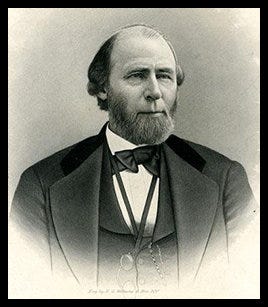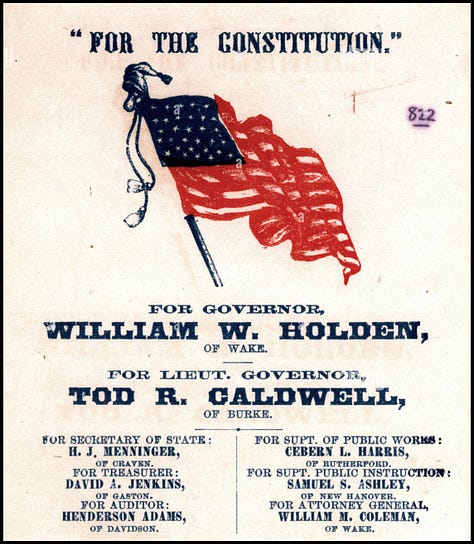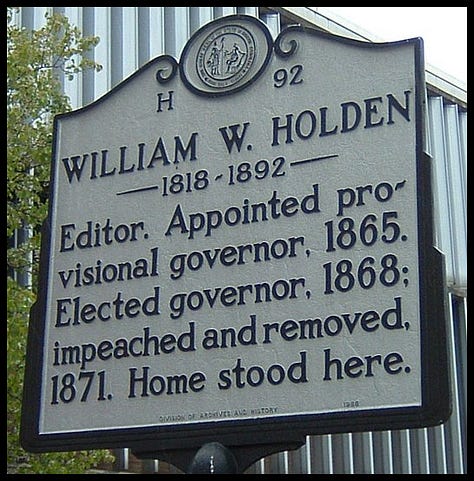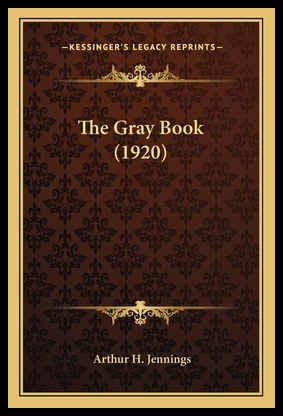UNION LEAGUE TERRORIS Part 2
Reconstruction Era: The Union League and beginning of the Ku Klux Klan as protectors for those terrorized by the Union League
In the mid-1950’s the Sons of Confederate Veterans found it necessary to re-issue *The Gray Book, “in the interest of truth.” The preface notes:
“Falsehood is still spewed forth in the United States. …It is hoped that this re-published book may serve to inform those who wish to know the facts and to shame those who still wish to spread falsehood and engage in defamation.”
Union Leagues were formed to protect the continued electoral success of carpetbagger Republican governments. These included largely black militia units that terrorized black and white opposing Republican candidates. Little is remembered by political correctness historians today; the Union League preceded the Ku Klux Klan in time and extended them in numbers and violence.
Most people today know something about the Ku Klux Klan, but very few are familiar with the Union League of America, also called the Loyal League. Yet the Union League perpetrated far more violence against both blacks and white in the post-Civil War Reconstructive years of 1865 to 1867 than the Klan ever has.
The birth of the Klan was in fact a response to Union League bullying, violence, and murder. Why has the Union League been shoved into the hole of history? It is because the Union League was essentially a federal agency carrying out policies of Reconstruction. The memory of such political despotism, corruption, and violence is just too embarrassing not to hide. This is even truer in today’s hysterical political correctitude that chains modern activities to narrow bounds of subject, reasoning, and speech.
In 1862, many in the North had been demoralized by Confederate victories in the field. Also, pro-States Rights Democrats made substantial political gains in six Northen states. Many Republicans felt that the success of Union war policies might be threatened by this. As a response, Union Clubs was formed in almost every town to support the war, the troops, and the Republican Party. These became the Union League of America. As the war ended, Union League Clubs were also formed by Union loyalists in the South. These became a political arm of the Reconstruction or carpetbagger state governments. Their initial goal, shared with the Freedmen’s Bureau, was to make sure that blacks registered to vote and voted Republican. Most of the loyalist whites soon dropped out of the League, except for the carpetbagger politicians and Federal Army officers who formed its key leadership, the League was composed almost exclusively of former slaves and black soldiers of the Federal Army.
Radical Republican leaders in Washington realized during the war that if the South came back into the Union with Democrat Congressmen, the Republicans would lose the political dominance they had enjoyed since the 1860 election. This is why the Radical Republicans in Congress wanted to shove Lincoln’s replacement, Andrew Johnson, aside. Johnson being a former Democrat, a constitutional conservative was still sympathetic to States Rights and committed to following Lincoln’s lenient ideas about reconstructing the South. He was also incorruptible. They wanted control of the Reconstruction. Their first goal was to punish and humiliate the South, then to remake it into a powerful political tool for permanent national dominance by a Republican Party tightly controlled by a small, but ruthless faction. The core leaders of that faction were radical abolitionists Thaddeus Stevens, Charles Sumner, Edwin Stanton, Benjamin Wade, and Benjamin “Beast” Butler.
These ruthless radicals believed the key to making the South solid Republican was the black vote. Thus, it was crucial to make sure all blacks voted Republican. The March 1867 Reconstruction Act disenfranchised all Confederate veterans for the foreseeable future. Thus 85% of the white vote was eliminated. The Radical Republicans also thought it necessary to alienate blacks from white Southerners. Democrats, especially their former masters. Before the onset of war and especially immediately following the war, the relationships between former slaves and masters were cooperative and often affectionate.
Most slaves in the South had been well treated, and in many cases, like family. The whites also appreciated the tremendous loyalty that most blacks had shown them during the war. The vast majority did not desert them during the war, and no Confederate Army in the field could have moved a mile without black wagon drivers and other logistical support. They served in many capacities. Some had proven their loyalty and combat effectiveness in the Confederate military infantry and calvary regiments.
Union League meetings were conducted by a mystical secret society with secret rituals. Meetings were especially devoted to stirring up enmity between black and whites. A catechism written by Radical Republicans in Congress was used in Union League meetings to create an unreasonable sense of entitlement, grievance, and resentment. The were taught that Northern Republican whites were their friends and allies, and that white Southerners and Democrats were enemies to be hated and despised. They were frequently promised that they would receive land and livestock confiscated from the whites. In some cases, they were even promised racial dominance that would entitle them to the wives and daughters of their white enemies. This led to several violent racial incidents. Such racial incidents were frequently used by carpetbagger governments to demonstrate to Washington and the Northen press and public that the continued the need for Southern reconstruction. Other promises were in the form of threats of a death penalty by hanging to any black who betrayed the League by voting Democrat.
With the coming of Radical Reconstruction and martial law the role of the Union League became increasingly aggressive. Union League militias were formed and were an enforcement arm of the carpetbagger governments. The militias were composed of former slaves and black troops station in each state. The Union League had 250,000 men in ten Southern States. North Carolina’s Scalawag Governor William Woods Holden (R) had a Union League militia of 80,000 at his bidding. The primary role of the Union League was now to keep the corrupt carpetbagger governments in power. This included suppression of competing of carpetbagger factions.
To guarantee that all blacks voted Republican, the Union League bullied and beat other blacks into submission. Even flogging with the lash was used. If that did not work, they exacted the death penalty, which was frequently done by lynching. To intimidate whites from seeking power or influencing black voting, they conducted terror campaigns. Barns and sometimes houses of whites were burned. In some cases, small towns were burned, as in Warren and Hamburg, Arkansas. Men, women, and children were killed in raids on “insurrectionary” communities and counties. Their deaths were reported as “killed trying to escape.” There were Union League barn burnings and other destruction in every North Carolina County. During a single week of 1869 in Gaston County, North Carolina, nine barns were burned. In two months of the same year in Edgecombe County, two churches, several cotton gins, a cotton factory, and many barns and homes were burned. The Raleigh Sentinel reported on August 29th of the same year that ten Federal Army companies associated with the Union League had terrorized the Goldsboro area and committed violent depredations of all sorts. It was reported the actions of the troops “…so violent that it was unsafe for women to leave their homes.” This was all part of the Reconstruction mandate to remake the South.
In Myra Lockett Avary’s 1906 book, Dixie After the War, she relates a tragic, but not untypical atrocity. In upstate South Carolina a group of Union League federal soldiers marching and singing halted to discharge a volley of bullets into a country church during services, instantly killing a fourteen-year-old girl. At a nearby residence, a squad of the same troops entered a home and bound the elderly owner as they ransacked his house and argued who would ravage his daughter. The girl, when approached, drove a concealed knife through the heart of her assailant. She was then beaten to death by the rest. But under corrupt military and carpetbagger rule, Southern whites had little recourse to any justice, and no federal justice occurred.
By 1870, the corruption of the carpetbagger governments and the violence of the Union League was becoming a concern to a significant minority in the U.S. Congress. As Klan activity increased in response to the Union League and other Reconstruction misdeeds, the Radical Republicans formed a committee to investigate the Klan. A minority report by Northen Democrats and Conservative Republicans representing more than a third of the committee, however, noted that the Union League had “instilled hatred of the white race” and had “made arson, rape, robbery, and murder a daily occurrence.” They also noted the role of corrupt government and Union League violence in driving whites to take the law into their own hands.
A very stringent anti-Klan law was passed by North Carolina legislature under the direction of Governor Holden in January 1870. True to past Radical Republicanism despotism, it gave the Governor power to declare counties in a state of insurrection and supersede practically all laws and Constitutional rights in its prosecution. Despite a vigorous attempt to enforce the law, Klan-like activity increased and a top black activist and leader of the League in Alamance County was found hanging in a tree. Shortly, thereafter, Senator John Stephens, a ranking white operative for Governor Holden, seeking evidence for Klan prosecutions, visited a Caswell County Union League meeting. There he handed to each of approximately twenty members a box of matches with the suggestion that they should be put to good use burning barns. The next night, seven barns, a row of houses, and the tobacco crops of several prominent citizens were burned.
A few days later Senator Stephens attended a rally at the Yanceyville Courthouse for the purpose of making notes on the speeches. He was quietly abducted, gagged, and brutally murdered in one of the Courthouse rooms with an open window to a crowd outside. His body was not discovered until two days later. It was not proven until 1936 that it was a well-organized assassination by the KKK. The gruesome mystery and death of Stephens prompted Governor Holden and his advisors to launch a military campaign against the KKK in June. They hoped this would also start a political positive in the coming August elections.
Holden called upon the black Union League militia regiments in eastern North Carolina and the white veterans of Union General George W. Kirk’s notorious bushwhackers from the mountains to score a decisive victory. Kirk was to be in charge. Kirk was a Confederate deserter who had been made a colonel in the Union Army during the war. During the war, Kirk had commanded a combined force of Union Army regulars, Confederate deserters, and opportunistic criminals. A good size book could be written on the depredations and atrocities Kirk and his men inflicted on civilians in western North Carolina during the war. According to a report by a Union officer stationed in Yanceyville, Kirk lived up to his evil reputation in the service of Governor Holden. Kirk’s troops were “…an armed mob roaming the country, pillaging at will, insulting citizens with impunity, and even threatening to attack the United States troops.” Many KKK suspects were arrested and imprisoned.



On August 4th of 1870, the elections in North Carolina took place. Despite their despotic tactics the Republicans were very nearly defeated. More than two-thirds of the legislative seats went to the Democrats. A growing number of whites had been able to register, and many blacks and even Union men had found the carpetbag corruption and tyranny so despicable that they voted for the Democrats. On August 6th, U.S. District Judge George Brooks found that Kirk had no evidence against any of his prisoners and ordered their release. Thus ended the “Kirk-Holden” War. Kirk fled north, and within a few months, Governor Holden was impeached by the North Carolina House for abuse of power, tried by the Senate, and was removed from office. Within a year the Union League in North Carolina disbanded and disappeared. Former Confederate General John B. Gordon testified in 1871 to the Joint Congressional Committee of Affairs in the Insurrectionary States that:
“The first and main reason (for the Ku-Klux-Klan) was the organization of the Union League.”
Gordon, who later became Governor of Georgia and then a U.S. Senator, also stated that even the burning of Atlanta and the devastation of Georgia during the war did not create a tenth of the animosity created by the Union League’s treatment of the Southern people. Former Confederate General Nathan B. Forrest, a reputed founder of the Klan, testified before the same committee that:
“The Klan was intended entirely as a protection to the (Southern) people, to enforce the laws and protect the people from outrages.”
Both men realized, however, that after a few years, the Klan, formed in a people’s desperate cry for survival and justice, had itself become a lawless outrage. But it was the federally sponsored Union League that ranked first in time and violence, and this should never be forgotten. The evils it inflicted on both black and white still live today.
*The Gray Book: This work has been selected by scholars as being culturally important and is part of the knowledge base of civilization as we know it. This work is in the "public domain in the United States of America, and possibly other nations. Within the United States, you may freely copy and distribute this work, as no entity (individual or corporate) has a copyright on the body of the work. Scholars believe, and we concur, that this work is important enough to be preserved, reproduced, and made generally available to the public.
References:
Dixie After the War, Myra Lockett Avary, 1906
The Story of Reconstruction, Robert S. Henry, 1937
The Invisible Empire: The Story of the Ku Klux Klan 1866-1871, Stanley F. Horn, 1937
North Against South: The American Iliad 1848-1877, Ludwell H. Johnson, 1978, 1993, 2002
*Union League Clubs still exist today, as private social clubs.









BRAVO! And frankly I doubt the KKK was ever as bloody as modern revisionists and Hollywood try to portray them as. Given the propensity for murder and violence by the subhuman feral niggers, it's time the KKK, made a comeback and start cleaning house